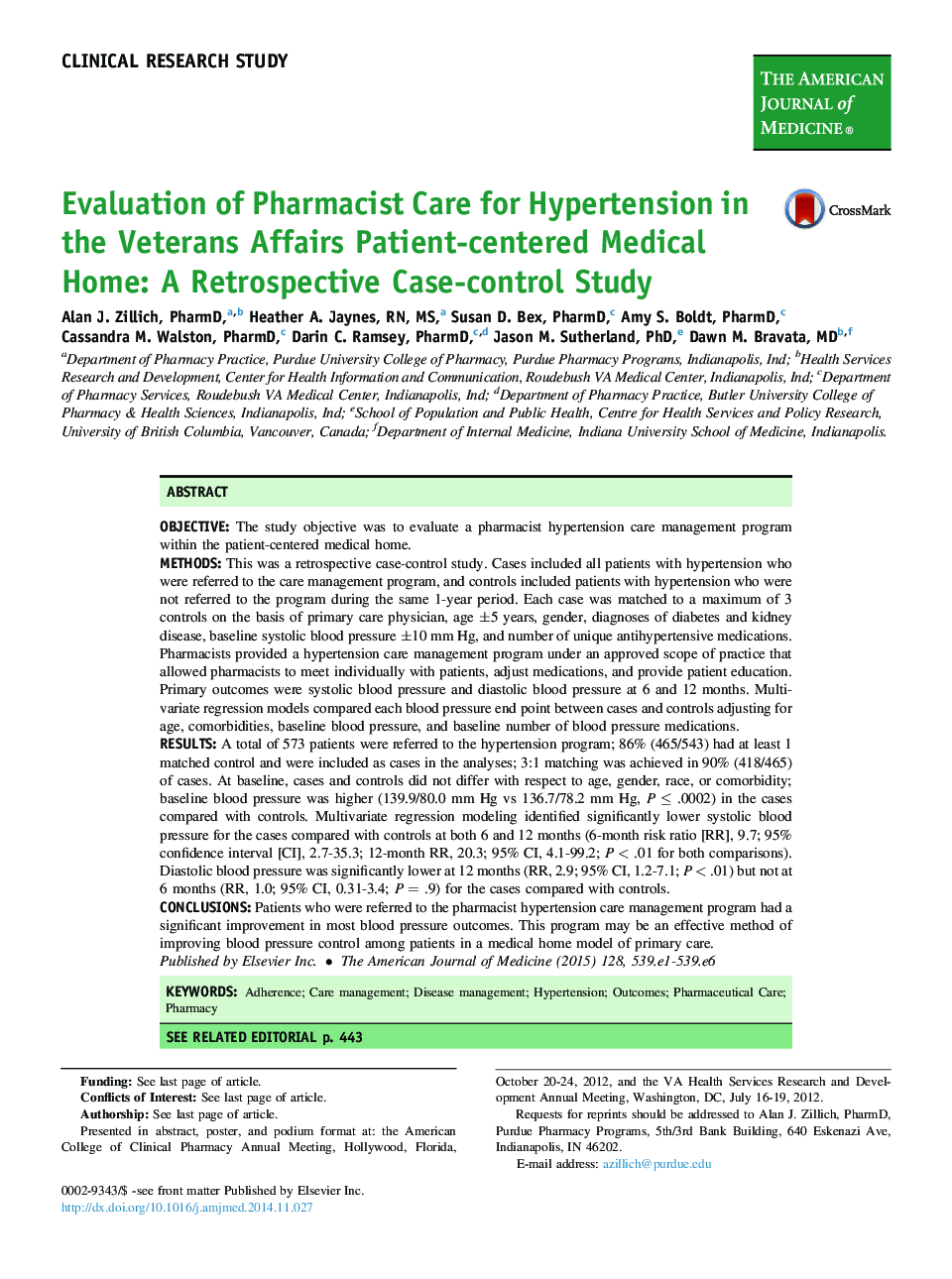| Article ID | Journal | Published Year | Pages | File Type |
|---|---|---|---|---|
| 5875744 | The American Journal of Medicine | 2015 | 6 Pages |
ObjectiveThe study objective was to evaluate a pharmacist hypertension care management program within the patient-centered medical home.MethodsThis was a retrospective case-control study. Cases included all patients with hypertension who were referred to the care management program, and controls included patients with hypertension who were not referred to the program during the same 1-year period. Each case was matched to a maximum of 3 controls on the basis of primary care physician, age ±5 years, gender, diagnoses of diabetes and kidney disease, baseline systolic blood pressure ±10 mm Hg, and number of unique antihypertensive medications. Pharmacists provided a hypertension care management program under an approved scope of practice that allowed pharmacists to meet individually with patients, adjust medications, and provide patient education. Primary outcomes were systolic blood pressure and diastolic blood pressure at 6 and 12 months. Multivariate regression models compared each blood pressure end point between cases and controls adjusting for age, comorbidities, baseline blood pressure, and baseline number of blood pressure medications.ResultsA total of 573 patients were referred to the hypertension program; 86% (465/543) had at least 1 matched control and were included as cases in the analyses; 3:1 matching was achieved in 90% (418/465) of cases. At baseline, cases and controls did not differ with respect to age, gender, race, or comorbidity; baseline blood pressure was higher (139.9/80.0 mm Hg vs 136.7/78.2 mm Hg, P ⤠.0002) in the cases compared with controls. Multivariate regression modeling identified significantly lower systolic blood pressure for the cases compared with controls at both 6 and 12 months (6-month risk ratio [RR], 9.7; 95% confidence interval [CI], 2.7-35.3; 12-month RR, 20.3; 95% CI, 4.1-99.2; P < .01 for both comparisons). Diastolic blood pressure was significantly lower at 12 months (RR, 2.9; 95% CI, 1.2-7.1; P < .01) but not at 6 months (RR, 1.0; 95% CI, 0.31-3.4; P = .9) for the cases compared with controls.ConclusionsPatients who were referred to the pharmacist hypertension care management program had a significant improvement in most blood pressure outcomes. This program may be an effective method of improving blood pressure control among patients in a medical home model of primary care.
